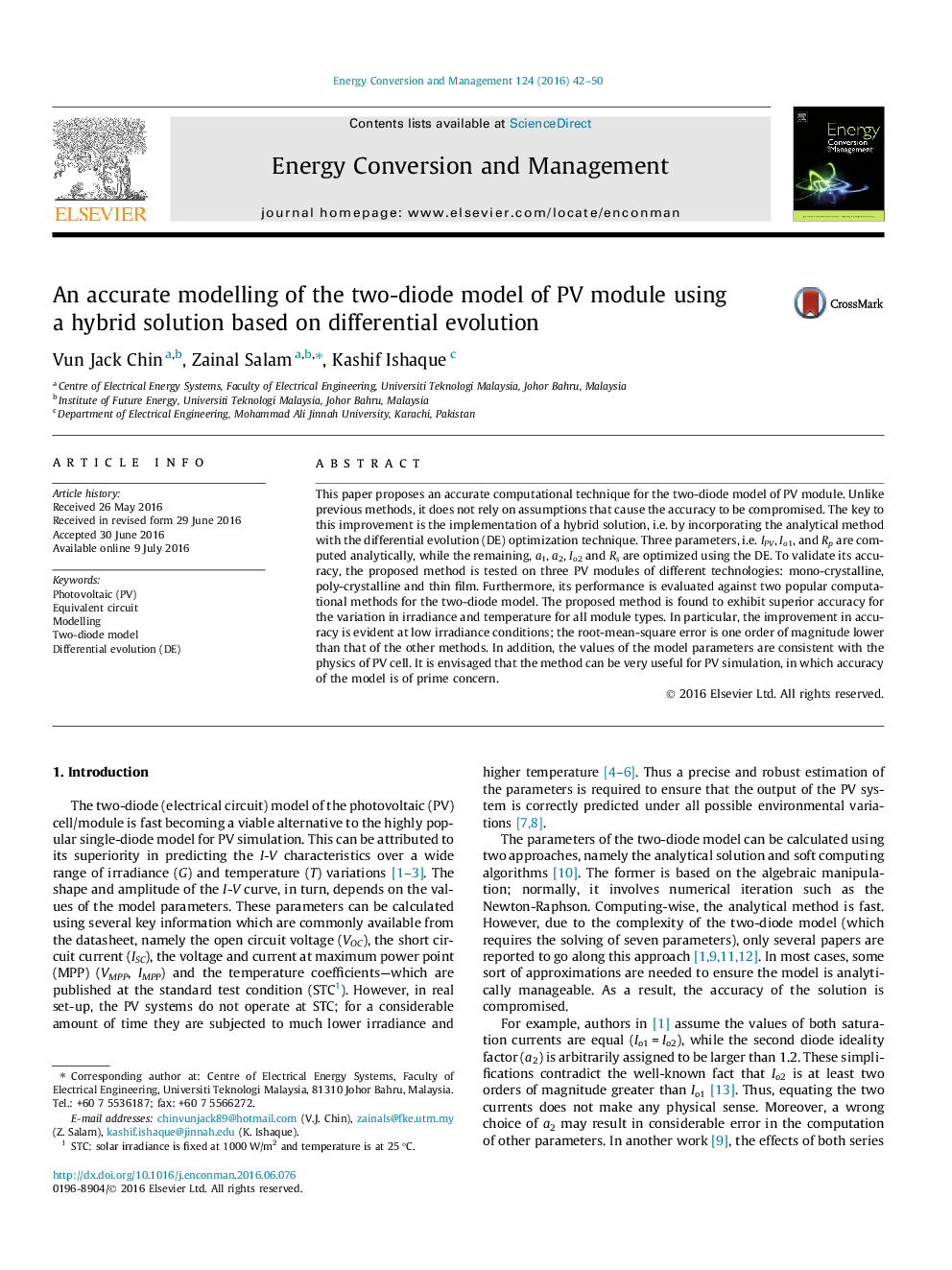| Article ID | Journal | Published Year | Pages | File Type |
|---|---|---|---|---|
| 764961 | Energy Conversion and Management | 2016 | 9 Pages |
•An accurate computational method for the two-diode model of PV module is proposed.•The hybrid method employs analytical equations and Differential Evolution (DE).•IPV, Io1, and Rp are computed analytically, while a1, a2, Io2 and Rs are optimized.•This allows the model parameters to be computed without using costly assumptions.
This paper proposes an accurate computational technique for the two-diode model of PV module. Unlike previous methods, it does not rely on assumptions that cause the accuracy to be compromised. The key to this improvement is the implementation of a hybrid solution, i.e. by incorporating the analytical method with the differential evolution (DE) optimization technique. Three parameters, i.e. IPV, Io1, and Rp are computed analytically, while the remaining, a1, a2, Io2 and Rs are optimized using the DE. To validate its accuracy, the proposed method is tested on three PV modules of different technologies: mono-crystalline, poly-crystalline and thin film. Furthermore, its performance is evaluated against two popular computational methods for the two-diode model. The proposed method is found to exhibit superior accuracy for the variation in irradiance and temperature for all module types. In particular, the improvement in accuracy is evident at low irradiance conditions; the root-mean-square error is one order of magnitude lower than that of the other methods. In addition, the values of the model parameters are consistent with the physics of PV cell. It is envisaged that the method can be very useful for PV simulation, in which accuracy of the model is of prime concern.
